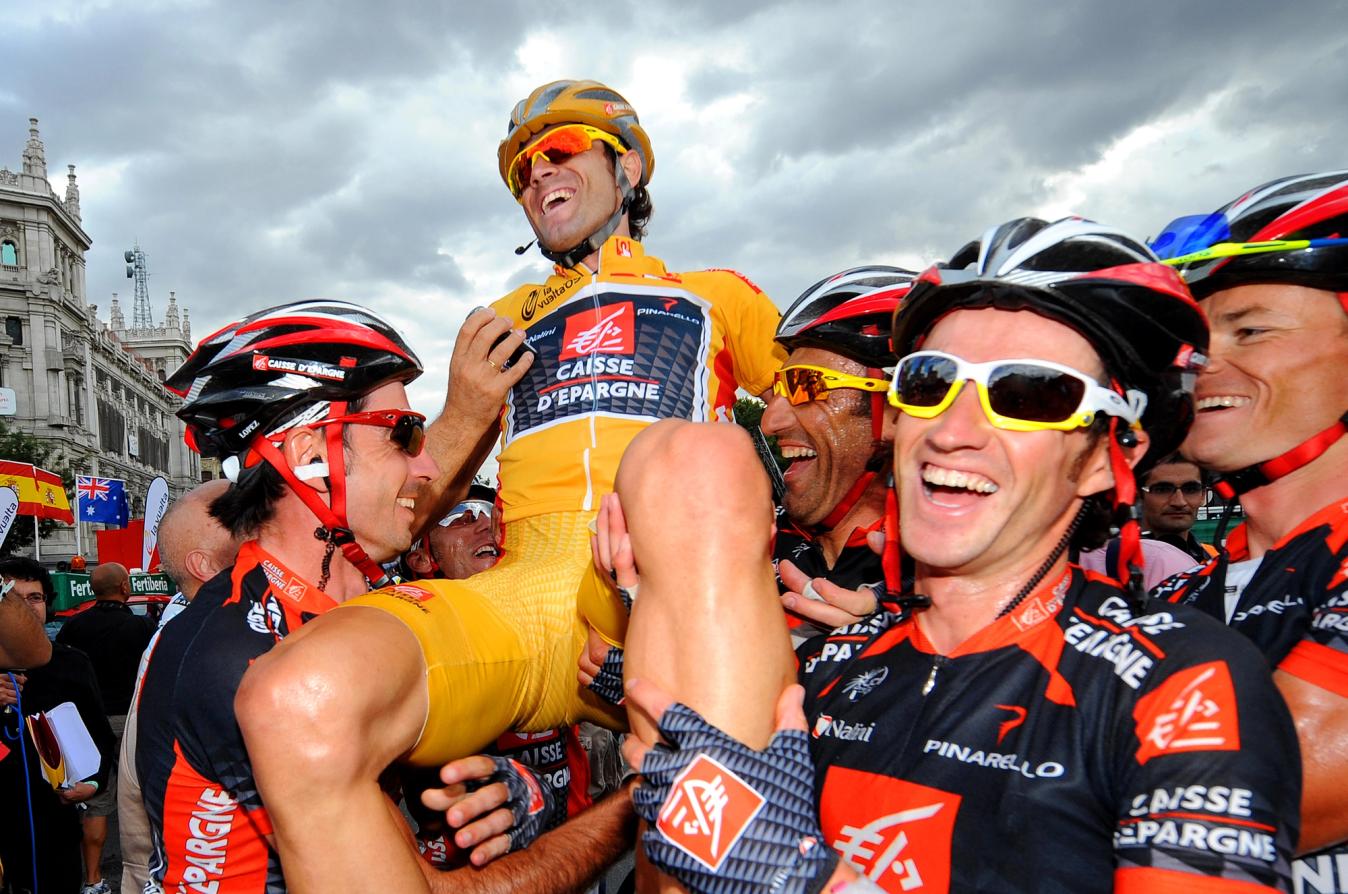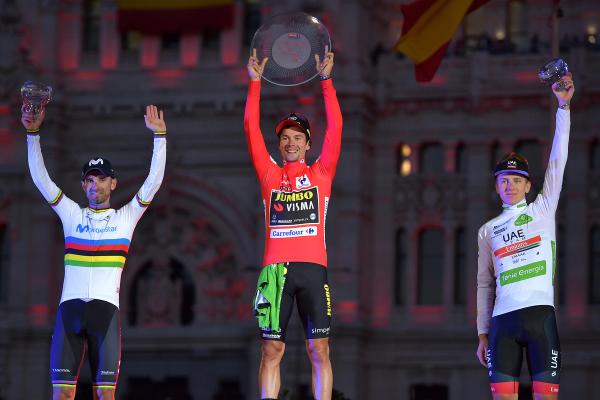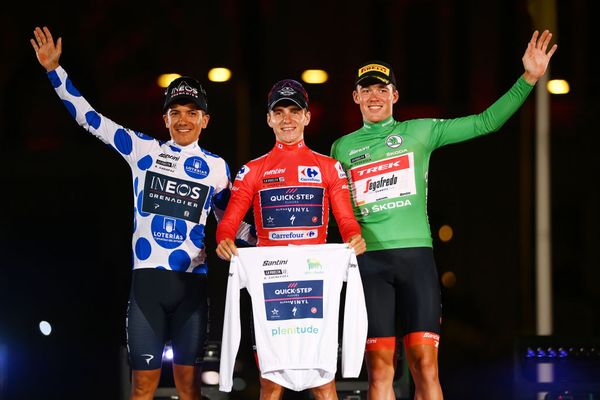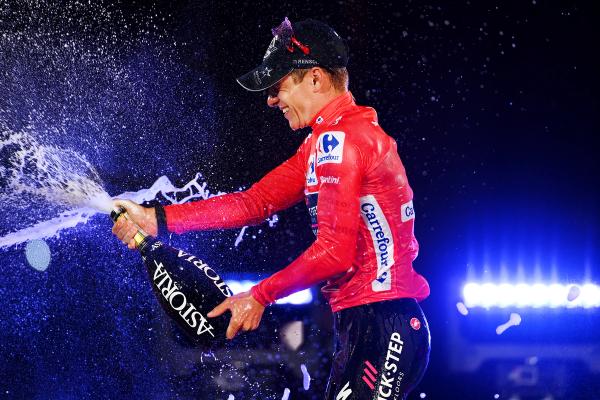Top 10 surprising facts about the Vuelta a España
From the colour of the jersey to the closest finish ever and the relative recency of Grand Départs outside of Spain, these are ten facts you may not know!
George Poole
Junior Writer
Having 'only' been around since 1935, the Vuelta a España is the youngest and perhaps least well-known of the three Grand Tours. With its slot towards the end of the racing calendar, it is also the last three-week stage race of the season. As such, it has historically been overlooked in favour of the Giro d'Italia and Tour de France, but we're here to tell you why you'd be wrong to look past the Vuelta!
It may not be as old as the Giro or the Tour, but it is possibly the most exciting of the three races and is jam-packed full of weird and wonderful history. With this year's race perfectly poised heading into the second rest day, here are our top 10 Vuelta facts that you may not know!
The Vuelta used to take place in the spring
Much like the Giro d'Italia, the Vuelta a España used to be held in April/May of each year, which did create a clash between the two major races. However, it was a situation that was not rectified for 60 years, due to the Vuelta not being seen in the same light as the Giro for much of that time.
Read more: A short history of the Vuelta a España
No one can precisely say when the Vuelta became seen to stand alongside the Giro and Tour de France, but for much of its history, the Vuelta was a parochial affair with a very Spanish lineup.
As the race began to grow in prominence throughout the 1990s, the race organisers decided enough was enough in 1995 and moved the Vuelta to August/September - a slot it has held ever since.
The Vuelta did not begin abroad until 1997
Having foreign starts to Grand Tours is nothing new. The Tour de France had its first foreign Grand Départ in Amsterdam, the Netherlands, in 1954, whilst the Giro d'Italia started in San Marino in 1965. Both of these races continued the tradition of beginning on foreign soil with gusto, but the Vuelta a España unsurprisingly stayed close to home for much longer.
Given its status and the number of homegrown riders who made up its startlist - 29% of its overall winners have been from Spain - it simply did not make sense for the Vuelta to venture abroad at the start of the race. From time to time, the route would deviate into neighbouring countries, but it was not until 1997 that its first stage would begin abroad.
In 1997, the start was held just across the border in Lisbon, Portugal. But the next foreign Grand Départ would not come until the start in Assen, the Netherlands in 2009. Should we be strictly accurate, although Grand Départ has become the colloquial term for all the beginnings of Grand Tours - not just the Tour de France - the official title for the Vuelta's flag drop is the Gran Partida.

© Velo Collection (TDW) / Getty Images
Assen plays host to the Gran Partida of the 2009 Vuelta a España
Since 2009, only two of the Vuelta's 14 Gran Partidas have taken place outside of Spain - Nîmes (France) in 2017 and Utrecht (the Netherlands) in 2022.
With its late adoption of a foreign Gran Partida, it is perhaps surprising that of the three Grand Tours, the Vuelta is the only race whose first edition was not won by a homegrown rider. Indeed, the first two editions of the Vuelta were won by the Belgian, Gustaaf Deloor. Frenchman Maurice Garin was the first winner of the Tour de France in 1903, whilst Italian Luigi Ganna won the Giro d'Italia in 1909.
In fact, remarkably - for a non-Vuelta fact, we must admit - the first foreign winner of the Giro d'Italia did not arrive until Switzerland's Hugo Koblet in 1950.
There have been significantly fewer editions of the Vuelta than any other Grand Tour
Seen as the Vuelta began much later than the other two Grand Tours, it is not surprising that there have been fewer editions. But the extent to which this is the case will certainly raise an eyebrow or two. When Primož Roglič won the Giro d'Italia in May, he was crowned the winner of the 106th edition, with his Jumbo-Visma teammate emerging victorious at the 110th Tour de France in July.
Both champions are currently riding this year's Vuelta and riding very well, may we add. But amazingly, this is only the 78th edition of the Vuelta in its history. This means that we will have to wait until at least 2045 to mark the 100th edition of the Spanish Grand Tour, a milestone marked at the Tour de France in 2013.
To its credit, the Tour has been run every year since 1903, except during the World Wars. In contrast, whilst the Vuelta also experienced fallow years during the Second World War, it had not been run since 1936 anyway due to the Spanish Civil War.
Returning in 1941 and 1942 with two editions won by the incredible Julián Berrendero - covered in detail in Tim Moore's excellent book, Vuelta Skelter - the Vuelta was called off between 1943-44 as a result of WWII, did not take place in 1949, and experienced another long hiatus between 1951-54 because of economic concerns.
As the Frenchman Jean Dotto beat home favourite Antonio Jiménez and the irrepressible Raphaël Geminiani in 1955, the Vuelta had finally cracked it. Since then, the race has been run every single season and this year's edition looks set to be another cracker.
The colour of the leader's jersey has changed countless times
The maillot jaune... the maglia rosa... names that are as synonymous with our sport as Eddy Merckx and Marianne Vos. The maillot rojo, meanwhile, is certainly less so. In fact, the Vuelta's red jersey has only been awarded to the leader since Vincenzo Nibali won the race in 2010.
The leader's jersey began as orange in 1935, changing to white in 1941, back to orange in 1942, and then to white with a horizontal red stripe from 1945-50, before it became yellow in 1955 and stayed this way until 1996.
And, breathe.

© Velo Collection (TDW) / Getty Images
Alejandro Valverde and his Caisse d'Epargne teammates celebrate his 2009 Vuelta a España victory
If that wasn't enough, the jersey reverted back to orange for a year in 1997, turned yellow again in 1998, and then deepened to a golden shade from 1999 to 2009. The last rider to win the gold jersey in 2009 was Alejandro Valverde, winning his one and only Grand Tour.
If you're going to win one Grand Tour, why not make it gold, eh?
The Altu de l’Angliru is only a recent addition to the race
The Tour de France has the Col du Tourmalet, Alpe d'Huez and Mont Ventoux. The Giro d'Italia has the Stelvio, Gavia and the Pordoi Pass. All climbs which are steeped in Grand Tour history, proving host to some of the sport's most iconic moments throughout the 20th century. The Vuelta, for its part, has the Altu de l’Angliru.
One of the steepest climbs in northern Europe, the Angliru is often regarded as the toughest test on the WorldTour calendar. It has become synonymous with the Vuelta in the 21st century, but that points to its peculiarity - the Angliru was only recently added to the Vuelta's list of climbs.
Unlike the likes of the Tourmalet and the Gavia, the Angliru was first featured in a Grand Tour stage in 1999. This addition happened only by chance, with head of communications at ProTeam O.N.C.E., Miguel Prietro, stumbling across the climb when hiking in 1998.
Recognising that the Angliru could stand alongside the Lagos de Covadonga as one of the Vuelta's mythical tests, Prietro sent a letter to race director Enrique Franco, and the rest is history.
Read more: Stage 17 preview - the Vuelta returns to the Angliru
With a list of winners that includes Alberto Contador, Hugh Carthy and José María Jiménez, the Angliru has played host to some of the most exciting stages in recent memory. It is already one of the sport's most iconic summits and will test the world's best once more in stage 17 of this year's race. The Vuelta certainly has a lot to thank Prietro for.
The 1984 Vuelta was the closest Grand Tour in history
When people think of close Grand Tours, their minds immediately wander to the battle between Laurent Fignon and Greg LeMond at the 1989 Tour de France. Eight seconds was the American's ultimate winning margin over a devastated Fignon, but spare a thought for Alberto Fernández, second place finisher at the the 1984 Vuelta - victim of the smallest winning margin in Grand Tour history.
Pipping the Spaniard to the victory that year was the Frenchman, Éric Caritoux, who was only in his third year as a professional. Caritoux won a stage and the overall at that year's Vuelta, but it would prove the high point of his career, winning no further Grand Tours or Grand Tour stages. Instead, his notable victories were to be served for back-to-back wins at the French National Championship road race in 1988 and 1989.
Sadly, Fernández's life took a much sadder turn. The 29-year-old would only ride five more races before he and his wife were killed in a car crash in December, 1984. The last race of his life would prove to be the Trofeo Masferrer, which he rather poetically won.
The combination jersey only stopped being awarded in 2018
The combination jersey was one of the more peculiar awards in cycling, being presented to and worn by the rider who scored the lowest by adding the numeral rankings of the general, points and mountains classifications. This way, it would reward the most consistent rider across all three disciplines of Grand Tour racing.
At the Tour de France, the combination classification was last won by Steven Rooks in 1989, and at the Giro d'Italia, only Gilberto Simoni (2001) and Paolo Savoldelli (2006) have won the ranking since it stopped becoming an annual fixture in 1988.

© Velo Collection (TDW) / Getty Images
Joaquim Rodríguez celebrates winning the combination jersey at the 2015 Vuelta a España
As for the Vuelta a España, the jersey was presented right up until Simon Yates' victory in 2018. More often than not, the combination jersey was won by the overall winner of the Vuelta, ensuring that the white combination jersey was a lesser-seen sight in the peloton.
On only four occasions did a rider win the combination jersey, but not the overall title - 2002, 2003, 2012 and 2015.
Freddy Maertens holds the most stage wins in a single edition - with 13
The record for the most amount of individual stage wins by one rider at any Grand Tour was set at the Vuelta in 1977. Narrowly eclipsing the dominance shown by Alfredo Binda at the 1927 Giro d'Italia to win 12 out of 15 stages, Belgium's Freddy Maertens held his arms aloft a whopping 13 times at the 1977 edition of the Vuelta.
Read more: Previous winners of the Vuelta a España
To no surprise, Maertens went on to win that year's race. Funnily enough, the record number of stage wins in any one edition of the Tour de France is also hold - well, shared - by Maertens.
The versatile sprinter won eight stages of the 1976 Tour, a record shared by Charles Pélissier (1930) and Eddy Merckx (1970, 1974).
Maertens would eventually finish his career with 15 stage victories from the Tour de France, seven at the Giro d'Italia and two World Championship road race victories. But the 1977 would remain the only edition of the Vuelta that the Belgian ever competed in, leaving his tally of Vuelta stage wins at 13.
It's not a bad haul, is it?
Laurent Jalabert once achieved the full sweep at the Vuelta
Surpassing Maertens' total of 13 Vuelta stage wins are six riders, ranging from Delio Rodríguez with 39 victories to Gerben Karstens with 14. Sitting third on the all-time list of stage winners is France's Laurent Jalabert, who was once so dominant at the Vuelta that he won all three of the major classifications: overall, points and mountains.
Riding for the O.N.C.E. team in 1995, Jalabert also won five stages along the way as he beat Abraham Olano and Johan Bruyneel to the overall title.
Having clearly enjoyed his time in Spain, Jalabert returned the following season to pick up another two stage victories and the points classification. In fact, Jalabert won the points classification every year between 1994-1997 and is one of only five riders to have won this jersey in every Grand Tour.
But the 1995 Vuelta would remain the only overall Grand Tour victory of his career, with the Frenchman often suffering on the high altitude climbs in the Tour de France.
The Vuelta once had its own cocktail for the riders
We are going to end with quite a fun fact, one that we didn't even believe at first. Astonishingly, the Vuelta a España used to have its very own, specially made cocktail that the riders would drink in order to help them finish the gruelling race.
Invented by barman and cycling fan, Perico Chicote, this concoction was made up of: orange bitters, Grand Mariner, orange curaçao, gin and Italian vermouth.
To this day, nobody is aware of what the cocktail was called, but suffice to say, we are sure it made the hair on the back of the riders' neck stand to attention. Of the 50 riders that began the race, 29 reached the finish after more than 3,400km of racing.

© Sprint Cycling Agency
Stage 9 was another in a long list of tough days at this year's Vuelta a España
This year's race is almost exactly 300km shorter than the 1935 edition, but will no doubt have the riders gasping for an alcoholic beverage come the end of the three weeks.
Read the latest news:
- Lennard Kämna wins stage 9 after crosswinds tear apart the peloton
- Remco Evenepoel: 'Roglič's sprint [on stage 8] was not really fast'
- Primož Roglič wins stage 8 as Sepp Kuss goes into the red jersey
With nine stages already in their legs, the peloton still has a further 1,507.3km of racing to tackle before a winner can be crowned in Madrid.
The Vuelta returns after the rest day with a crucial 25.8km time trial on Tuesday, with live coverage beginning on GCN+ at 13:15 UK time on 5 September.
Head over to our Vuelta a España race hub for all the latest news, results and tech from Spain.


MAIN.jpg?w=600&auto=format)









